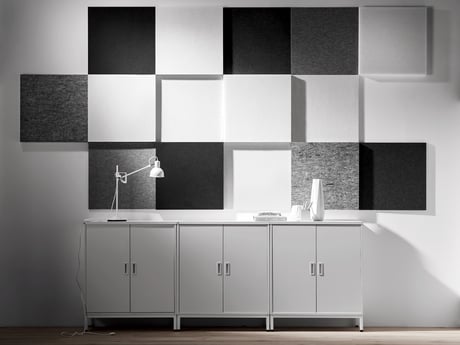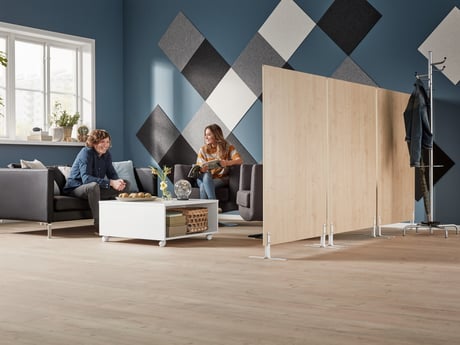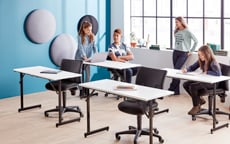- AJ Products UK
- Blog: Tips to Inspire Happiness at Work
- Improving the work environment
- 10 easy ways to improve acoustics in the office
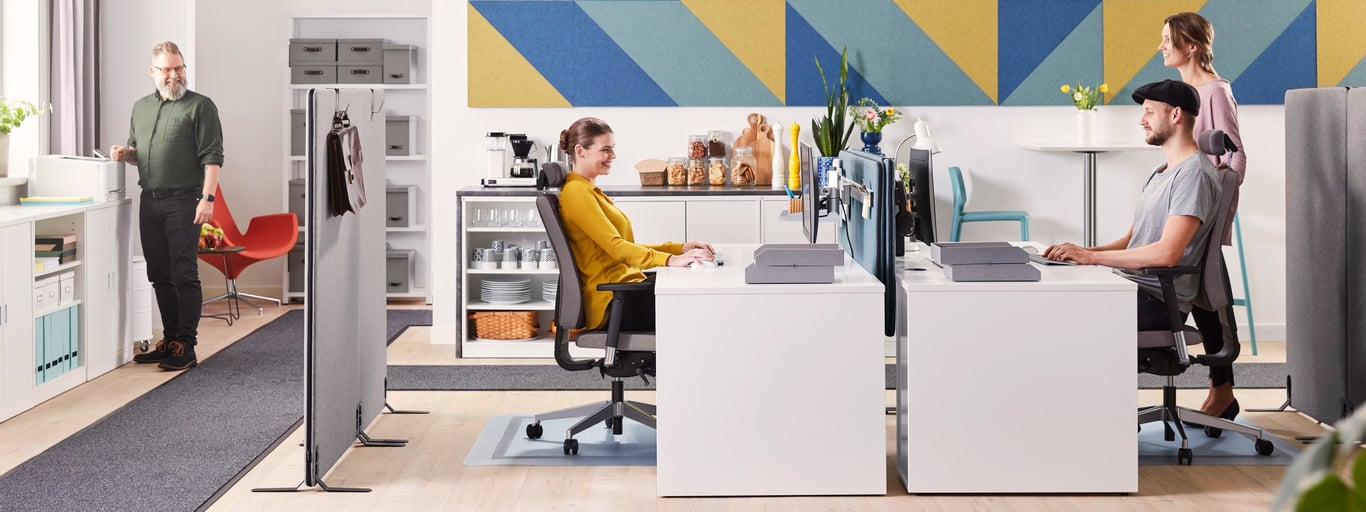
10 easy ways to improve acoustics in the office
In fact, research suggests it can take up to 25 minutes to fully regain your focus after a single interruption, such as a mobile notification or a quick question from a colleague.
But here's the thing: it shouldn’t be completely silent either. In a room with no ambient sound, voices can feel uncomfortably loud, and people may avoid speaking freely for fear of disturbing others. A good acoustic environment strikes the right balance: you should be able to hear your colleagues talk - but not clearly enough to follow the conversation.
The good news? There are many simple, low-cost ways to improve the soundscape in your office.
10 ways to reduce noise at work
1. Use soft furnishing to reduce echo: Textiles in all forms help to prevent noise reverberations and echoes. Furnishing your office with stylish curtains, carpets and fabric wall hangings or rugs is a good way to create a softer acoustic environment. In a very noisy office, specially designed acoustic panels will be the most effective way to trap sound waves and stop the noise levels building up too high.
2. Add upholstered furniture: Plenty of upholstered furniture, such as sofas, armchairs or breakout seating, is a good alternative if the room has hard floors and few soft furnishings.
3. Fill bookcases with books: Open bookcases filled with books or files are surprisingly effective at muffling sound. Avoid glass-fronted or closed storage with hard doors, they reflect noise rather than absorbing it, which can cause unwanted echo.
4. Bring in plants: Plants are natural sound absorbers that also purify the air and make the workplace more pleasant. Smart office planters make it simple to add real or artificial plants into your workspace.
5. Eliminate distracting device noises: Set your phone and computer to silent so you and your colleagues are not interrupted by distracting noises such as text messages or push notifications.
6. Add felt pads to chair legs: The scraping sound of chairs moving across hard floors is one of the most frequent, and irritating, office noises. Felt furniture pads are an easy fix: they reduce noise and help chairs glide more smoothly. For a longer-lasting solution, products like chair socks offer even better sound dampening.
7. Use a desk mat or surface cover: A desk mat reduces sound reverberations from the desktop and gives a softer work surface that is comfortable for your arms. It’s a small but effective acoustic upgrade for individual workstations.
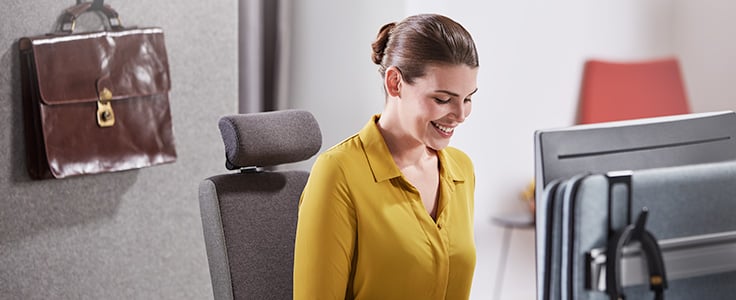
8. Install sound-absorbing desk screens: A desk screen with sound-absorbing properties makes a big difference to the soundscape. It blocks off some of the noise from your colleagues working nearby and creates a more secluded and private work area.
9. Use acoustic notice boards: Notice boards may be becoming less prominent in many workplaces, but they serve an important purpose. Not only can you use them to share information and events, but the surface also works as an acoustic damper, absorbing the sound reverberations that would bounce off the wall if they hit a hard surface instead. For businesses with a limited budget, notice boards are a cost-effective alternative to acoustic panels.
10. Introduce low-level white noise or natural sounds: Instead of adding to the overall noise levels, low-level white noise can mask more irritating and disturbing sounds, providing a comfortable background hum that prevents the office from being too quiet but also muffles noise from phone calls, conversations, etc. Recorded background noises, such as bird chirps, wind chimes or rain, can have a positive and relaxing effect on the office environment.
Create a calmer and productive workspace
Improving office acoustics doesn’t have to mean a complete refurbishment. With a few smart changes like adding textiles, acoustic panels or simply switching to felt pads on chair legs, you can create a quieter, more comfortable environment that supports focus and wellbeing.
Want help choosing the right acoustic solutions for your workspace?
Contact our team! We’re here to help you create a workplace that works for everyone.
